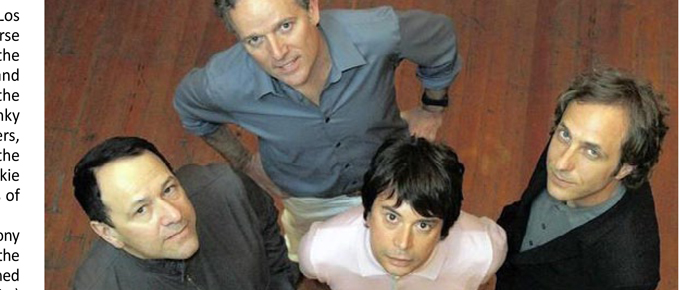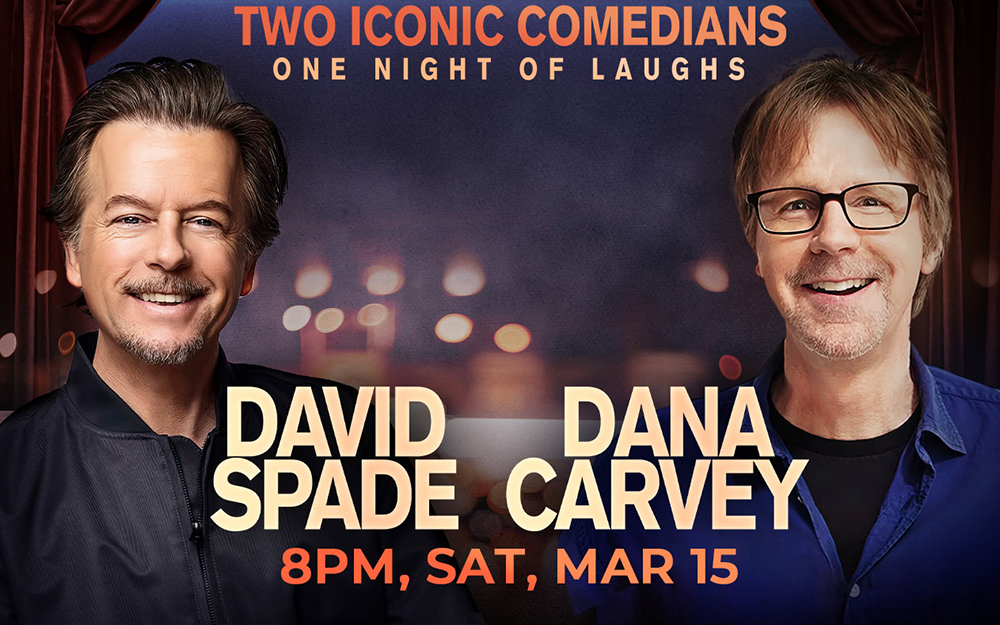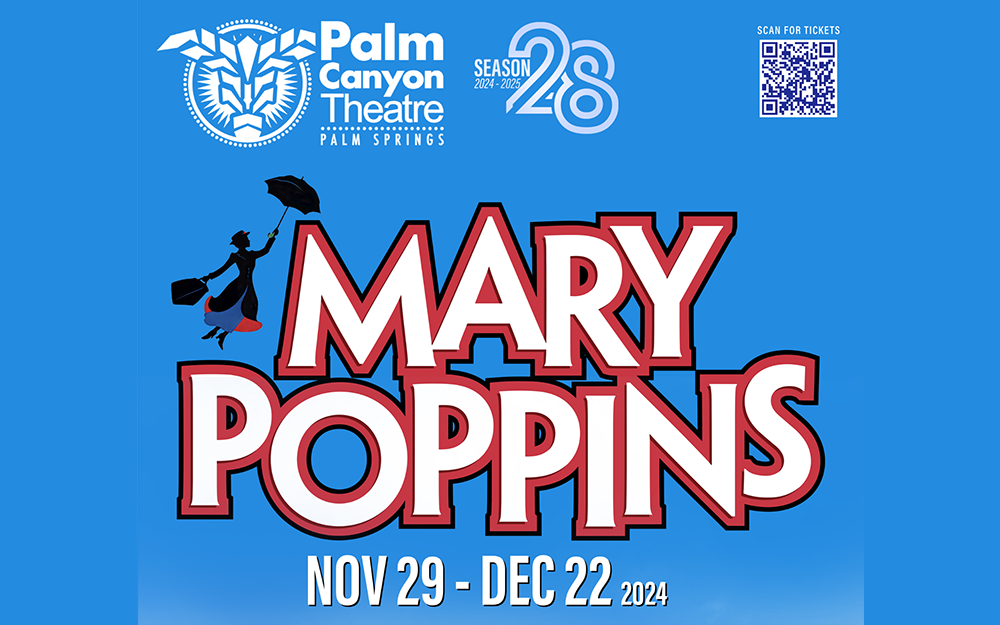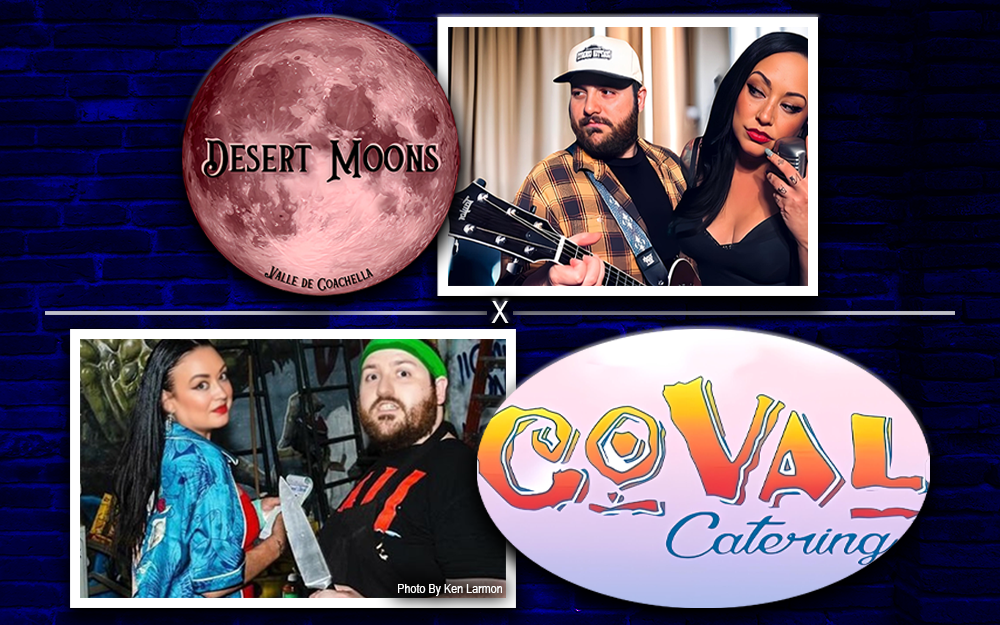
By Eleni P. Austin
In the late ‘70s and early 80s, Los Angeles boasted the most diverse music scene in the country. From the skinny tie Power Pop of the Knack and the Plimsouls, the Punk nihilism of the Adolescents and the Germs, the Punky Roots Rock of X, Los Lobos and the Blasters, the Rockabilly swagger of the Kingbees, the boho jazz flavor of Tom Waits and Rickie Lee Jones and the Hair Metal beginnings of Motley Crue and Guns N’ Roses.
In the midst of this symbiotic disharmony rose a music genre wholly organic to L.A., the Paisley Underground. (A term that was coined by Three O’Clock frontman, Michael Quercio.)
Paisley Underground was an apt description of a loose confederation of like-minded bands such as Rain Parade, The Bangs (later the Bangles), Dream Syndicate, Green On Red and The Three O’Clock.
The common thread between these musicians was a sincere devotion to the Folk and Psychedelic sounds of the mid ‘60s. The chiming vocals and ringing Rickenbacker guitars of the Left Banke and the Byrds, coupled with the Psychedelia of the Seeds and the Count 5. The D.I.Y. aesthetic of Punk Rock made it all possible.
The Three O’ Clock formed in 1982. Lead vocalist and bass player Michael Quercio was joined by drummer Danny Benair, guitarist Louis Gutierrez and Mickey Mariano on Keys. Originally they were the Salvation Army, (until they received a “cease and desist” letter from the venerable charity organization).
After slipping a demo tape to Rodney Bingenheimer, the influential KROQ DJ tirelessly championed the nascent band. This led to a deal with tiny Frontier Records. The Three O’Clock recorded a debut EP, Baroque Hoedown and quickly followed with a full-length, 16 ambourines.
Both efforts were well received. Not only did the Paisley Underground “movement” gain traction, but the band leap-frogged from Frontier to I.R.S. Records.
Although they positioned themselves as an indie, I.R.S. was distributed by A&M Records and owned by Miles Copeland, (the Dick Cheney of band managers, and brother to his biggest client, Stuart Copeland of the Police). I.R.S. served as an incubator for L.A. talent like the Go-Go’s, Oingo Boingo and Wall Of Voodoo and later achieved massive success with R.E.M.’s first 5 records.
The Three O’Clock recorded two albums for I.R.S., Arrive Without Travelling in 1985 and Ever After in 1986. Both seemed more slick and less Psychedelic. The band’s final effort, Vermillion was released on Prince’s vanity label, Paisley Park. Overly produced and awash in synthesizers, it completely abandoned their early influences.
The Three O’Clock were done by 1988. Quercio would go on to front Permanent Green Light and Jupiter Affect. Gutierrez played in Louis & Clark, Mary’s Danish and Battery Acid. Danny Benair moved to the production side of the industry and Mike Mariano left music entirely.
In late 2012, the band’s former manager, John Silva informed the guys that Goldenvoice was inviting the quartet join the Coachella line up for 2013. The band reconvened, (sans Mike Mariano, who was replaced by Adam Merrin from The 88) and 30 years after their heyday, The Three O’Clock was back.
The Three O’Clock played a few select dates leading up to Coachella and released a numbered, limited edition “bootleg” live concert (vinyl-only) LP for Record Store Day. Now the band has released a 20 track compilation that highlights their Frontier days.
The Hidden World Revealed features at least eight songs from their first long-player, 16 Tambourines. Four tracks, “Jet Fighter,” “Stupid Einstein,” “Around The World” and “Seeing Is Believing” are the original versions from the LP.
“Jet Fighter” is probably The Three O’Clock’s best known song, blending a pulsating big beat, spiraling guitar, lush multi-tracked harmonies, (featuring Quercio’s impossibly fey vocals), and tingle-y keys.
“Stupid Einstein” is a perfect pop confection. The melody is cloaked in sun-dappled acoustic guitar and pensive organ fills. The mood pivots between autumnal and carefree.
“Around The World” has a harder edge. Ferocious power chords thrust and parry. A spooky organ solo on the instrumental break ushers the song toward a psychedelic freak-beat conclusion. A well-placed cowbell steadies the beat.
“Seeing Is Believing” is a wistful, minor key gem. Layered guitars and harmonies are drenched in shimmering harpsichord.
Three 16 Tambourine tracks are alternate takes. “When Lightning Strikes” accents fluffy keys, bubbling bass lines, fuzztone guitar and sweet, love-struck lyrics.
“A Day In Erotica” offers up a swirly kaleidoscope of sounds. Powered by a billowy pump organ and candy-coated acoustic guitar, the tune is a roller coaster ride down a rabbit hole of romantic bliss.
Finally, the version of “On My Own” adds a string section to the tilt-a-whirl melody. Quercio’s layered vocals are hushed and groovy, they almost succeed in camouflaging his cold-blooded attempt to dump his girlfriend. “Discussing the reasons why I must go, let’s think of the fun and not the sorrow/ There’s no room for two when I’m on my own.”
To long time Three O’Clock fans, the real appeal of Hidden World… is the presence of unreleased material. “All In Good Time” and “In Love Too” were originally available on a long out of print various artists compilation called Radio Tokyo Tapes.
On the former a stutter-step beat collides with frantic harpsichord runs, jangly guitar and an ornate string section. In the midst of this maelstrom, the lyrics caution patience! The latter showcases see-saw guitar riffs anchored by a triple-time beat.
The Three O’Clock pay homage to their inspirations with two covers. “Lucifer Sam” is a Syd Barrett –era Pink Floyd song that adds plucked guitar chords to this haunted 60s relic. “In My Own Time” reminds listeners that before the Bee Gees were anointed the Kings Of Disco, their aspirations were originally Beatlesque. The ThreeO’Clock take on this tune weds a stop-start rhythm to Who-style guitar reverb.
From “Baroque Hoedown” come probably their most perfect song, “With A Cantaloupe Girlfriend,” and the relax-fit rebellion of “I Go Wild.”
Other stand-out tracks include “Sound Surrounds,” which is chewy-sticky-sweet in all the best ways. “Why Cream Curdles In Orange Tea,” a meandering early version of “In Love Too.” As well as a demo of “The Girl With The Guitar (Says Oh Yeah).” Here Quecio collaborates with Scott Miller from Game Theory.
For Three O’Clock complete-ists they include ephemera like a long-lost commercial for Rodney On The Roq, a Salvation Army demo, “Jennifer Only” and a fan-club-only Christmas song, “Regina Caeli” featuring traditional lyrics in Latin!
The Hidden World Revealed jingle jangles to a sweet conclusion with a pitch perfect rendition of the Byrds classic, “Feel A Whole Lot Better.”
The first time around seemed like a missed opportunity for the band. Hopefully their Coachella sets introduced them to a whole new generation. Also they should be feeling waves of love and enthusiasm from longtime fans. The time for a Neo-Psychedelic-Renaissance is now, and The Three O’Clock is the perfect band to lead the way.









































